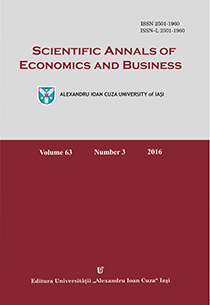Solvency and liquidity level trade-off: does it exist in Croatian banking sector?
Solvency and liquidity level trade-off: does it exist in Croatian banking sector?
Author(s): Ana Kundid Novokmet, Antonia MarinovićSubject(s): National Economy, Business Economy / Management, Economic policy, International relations/trade, Transformation Period (1990 - 2010)
Published by: Editura Universităţii »Alexandru Ioan Cuza« din Iaşi
Keywords: banks; liquidity; solvency; banking regulation; Croatia;
Summary/Abstract: We focus on 32 Croatian banks in the period 2002-2010 in order to investigate the solvency-liquidity nexus. Dynamic panel data analysis is applied on two basic models in which current liquidity ratio and equity to assets ratio are set as dependent variables, interchangeably, and other explanatory variables employed to capture the effect of bank size, profitability and asset quality as well as macroeconomic environment. We found two-way positive relationship between bank solvency and liquidity. However, bank size plays an important role in the capital and liquidity management, and trade-off between the solvency and liquidity level is found for the larger banks. Therefore, policymakers should take into consideration capital and liquidity interdependence, as well as the bank size effect when designing capital and liquidity requirements in order to downsize the regulatory burden for smaller banks, and increase them for larger banks. Namely, larger banks tend to minimize regulatory costs by avoiding simultaneous increase of liquidity and solvency. Small banks do exactly the opposite and stock both, capital and liquidity, what potentially makes their funds allocation sub-optimal, from their own as well as social point of view. Altogether, the paper contributes to scarce empirical evidence regarding bank solvency and liquidity interdependence, particularly when the post-transitional banking sectors are taken into consideration. It adds to knowledge on bank financial management in praxis, and bank managers and prudential authorities might find it relevant for their policies design and implementation.
Journal: Scientific Annals of Economics and Business
- Issue Year: 63/2016
- Issue No: 3
- Page Range: 429-440
- Page Count: 12
- Language: English

